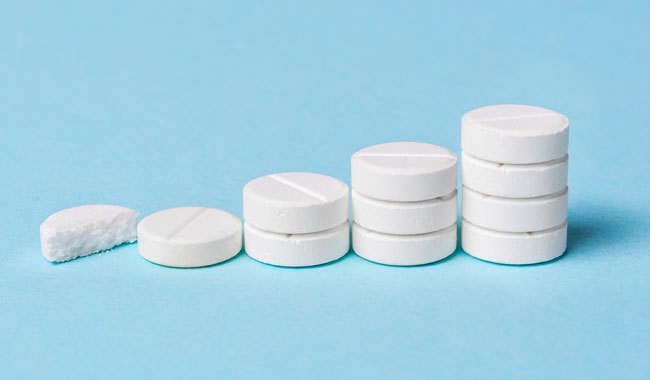
On October 25, President Trump announced his plan to lower prescription drug prices. Under the plan’s new proposed payment system, the Centers for Medicare & Medicaid Services (CMS) will launch a five-year pilot program—the International Pricing Index (IPI) model—that will allow Medicare to pay less for select Part B drugs when a lower international price is available. The model, which marks a significant departure from Medicare’s long-standing drug reimbursement approach, will be mandatory and cover half of the providers in the country. Trump touted the plan as an overdue solution that will finally hold drug companies and foreign countries accountable for high prices plaguing domestic patients. This post summarizes the must-know details behind the proposal and the administration’s likely path forward.
The Background
Drug prices have soared in recent years, particularly for older Americans. From 2011 to 2016, Medicare fee-for-service spending for Part B drugs increased from $17.6 billion to $28 billion, representing an annual growth rate of nearly 10%. Why? Well, there are a lot of issues, particularly if you follow the money.
Simply put, the business model for prescription drugs in the US revolves around opaque rules, a ton of regulation, implications from a global market, and the largest purchaser (CMS) being limited in its ability to negotiate prices. We saw the Trump administration respond back in May with its blueprint to lower drug prices. That blueprint was short on specifics, but the IPI announcement outlines some of the administration’s ideas.
The Details of the IPI Model
The IPI model is designed to test whether changing Part B drug reimbursement leads to improved quality of care for Medicare beneficiaries and reduced spending for the program. The model uses a three-pronged approach:
- It phases down the Medicare reimbursement amount for select Part B drugs to align with prices paid by foreign countries.
- It allows private-sector vendors to negotiate prices for drugs and compete for physician and hospital business.
- It changes the 4.3% (postsequester) drug add-on payment to a flat amount.
Part B drugs are separately payable outpatient drugs purchased by providers and administered in the physician office setting. Currently, Medicare pays for Part B drugs based on the drug manufacturer’s average sales price (ASP) plus a 6% add-on; due to sequestration, the add-on is effectively reduced to 4.3%. Under the proposed model, when a drug’s ASP is higher than its international price, CMS will instead pay the lower international price (the “target price”). The target price will be phased in over the five-year pilot period. CMS will continue to pay an add-on per drug, though this will be a fixed amount rather than today’s ASP-based rate. This means the add-on payment will increase for some drugs and decline for others, but in aggregate, CMS estimates the add-on will be comparable to the full 6% presequester rate. When all is said and done, CMS estimates this reimbursement change will reduce total Part B drug spending by approximately 30%.
Under the IPI model, physician practices and hospital outpatient departments are assigned to one of two groups based on their geographic area. Providers in the test group will start to receive certain drugs from private-sector vendors; these vendors will replace providers in the “buy and bill” system. For the control group, Part B drug reimbursement is unchanged, and providers will continue to buy and bill for drugs. Participation is mandatory for providers in the test group, and CMS is considering extending participation to other providers and suppliers (e.g., durable medical equipment suppliers, ambulatory surgical centers). The model will initially include single-source drugs and biologics and, over time, could expand to include multiple-source drugs and Part B drugs provided in other settings.
The IPI model will be a pilot project run under CMS’s Center for Medicare & Medicaid Innovation (CMMI). Using CMMI as its deployment vehicle allows the Trump administration to circumvent congressional approval and move forward with minimal political or bureaucratic friction.
The Reaction
This proposal represents a tidal shift in how Part B drugs are reimbursed. Many specialty providers (e.g., oncologists) rely on the current cost-plus reimbursement to support critical elements of their practices and fund care delivery infrastructure. Numerous provider advocacy organizations (e.g., ASCO, ACCC) have already spoken out against the proposal. But its reimbursement implications are uncertain until we see more details. Yes, providers may take a hit if the mechanics behind the plan don’t keep them whole; on the flip side, providers benefit by shifting practice risk onto private-sector vendors. Under the new model, providers shouldn’t be paid less than the cost of a drug—a common challenge today, especially for drugs with high inflation rates. However, even with this protection, some risk remains with providers (providers would still be on the hook to collect each patient’s 20% copayment).
The economics behind the model are hazy, and industry analysts are uncertain about its effectiveness. The model is underpinned by a promise that reducing Part B reimbursement will force drug manufacturers to lower prices domestically, raise prices abroad, or both. The plan does little to tackle the root cause of high pharmaceutical prices, so providers have the most to lose unless appropriate methodologies and parameters are implemented. Moreover, 340B providers face a significant risk of losing relied-upon savings if the IPI model eliminates that drug discount program.
The Path Forward
CMS is soliciting comments on the proposed IPI model through the end of December 2018, with the feedback intended to help set the model’s parameters. While the model is in a very early stage and many implementation details are yet to be addressed, CMS has stated its intention to move forward with a formal proposed rule in spring 2019 and a five-year pilot starting in early 2020.
Although it’s still too early to tell, it seems likely that this proposal, despite all the outrage and objections it has already generated, will move forward. Reasons to believe the Trump administration will push this model forward include the following:
- Campaign Promise: First, as noted in a previous blog post, drug pricing was a central tenet of Trump’s 2016 campaign platform. The administration’s drug blueprint was an initial response, and with this proposal we are starting to see the details come to fruition.
- No-Holds-Barred Approach: Second, this administration has a track record of moving forward with substantial changes despite significant opposition. Consider how CMS asserted its authority over the 340B program earlier this year, a change that effectively cut Part B reimbursement for 340B drugs in the hospital outpatient setting by almost 30%.
- Bipartisan Support: Finally, Democrats have been pushing for negotiable drug prices for years. In 2016, the Obama administration introduced a plan to make drug prices negotiable, although it was dropped after pushback from the healthcare industry and the Republican party. While some prominent Democrats, among them Senator Chuck Schumer, have asserted that this announcement (coming two weeks before the midterm elections) seems like a publicity stunt, this might be an issue on which a fractured US Congress can find common ground.
In the coming months, as CMS collects comments, clues regarding the model’s implementation likelihood and final parameters will emerge. Bottom line: this plan is a huge change, and given its potential financial significance (30% reduction in Part B drug spending) and spillover effect (broader application of reference pricing), it is one the entire industry will be watching.

